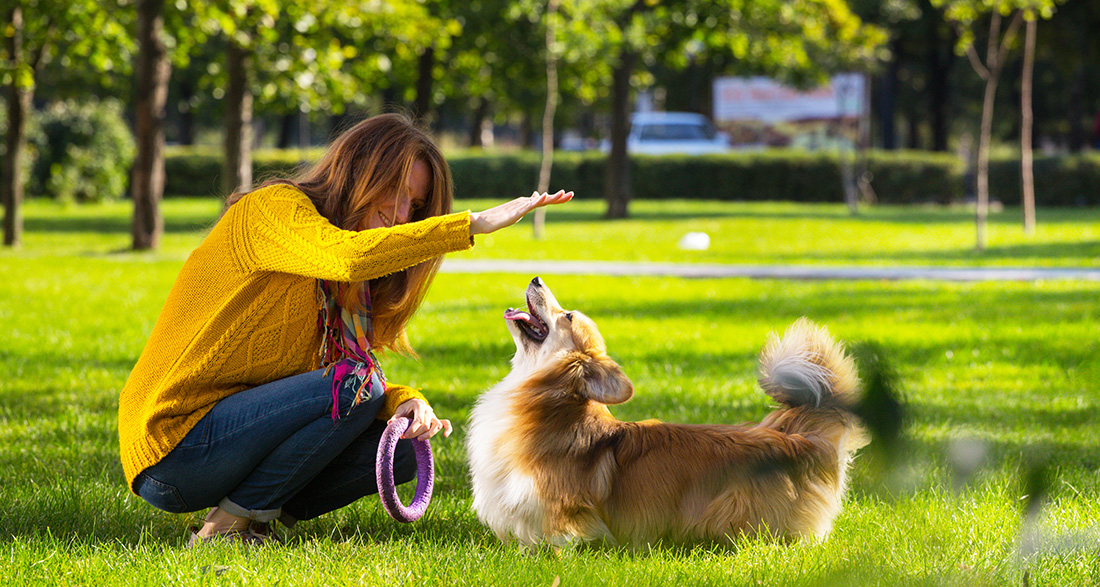If your dog doesn’t respond to your commands, it’s not defiance or malicious intent. Most often, the issue lies in the fact that our four-legged friends don’t understand what we want from them when they don’t obey immediately. The following tips will help you communicate better with your dog.
Dogs are very intelligent animals, but human language remains a foreign language to them. They can understand certain commands, but it takes some time and sufficient repetitions in training to learn them.
Dogs Understand Only Clear Commands
Humans are accustomed to communicating with words and understanding them. From childhood, they learn to pay attention to oral language and its meaning to understand what others expect from them. Body language, tone, and circumstances only play a role unconsciously. In dogs, it’s the opposite. They don’t understand the content of human words but primarily pay attention to body language, tone, sound, and general circumstances to infer what the bipeds want from them. If you change or add commands occasionally, your dog won’t understand you.
Therefore, make sure that “Sit” always remains “Sit,” “No” is always “No,” and “Heel” is always “Heel.” If you vary the command, saying something like “Sit down!” “Drop it!” or “Come here!” your furry friend won’t know that these are synonyms for its usual commands. Even if you say, “I said sit, Bello, didn’t you hear?” your dog won’t grasp what you mean. Agree with your family or roommates on a specific, clear command for a particular, clear action. If you remain consistent, your dog can better understand you. Also, complement verbal commands with body language signals and ensure that the tone of your words always sounds the same. For your pet, the emphasis is on the sound and tone, not the content.
Avoid Distractions in Training
Dogs have very keen senses and pick up on things that easily escape us humans. If your dog ignores commands, even when you are clear and consistent, it might be because something distracts him. This can happen at any time, especially when your four-legged companion is in a stimulating or hectic situation, offering a lot of distractions, such as in a dog park, on a busy street, or when there are visitors. However, especially at the beginning, it’s crucial that your pet can concentrate to learn the commands.
Therefore, choose a relaxed moment and a quiet place for training, especially in the beginning when you want to practice a new command. You can increase stimuli later when your pet listens to you in a calm atmosphere. If that still doesn’t work, take a step back until your dog understands what you want when you give a specific signal.
Practice Only When Your Dog Feels Comfortable
Distraction can come not only from external factors but also from within when your four-legged friend is, for example, very excited or stressed. Hunger or tiredness can also affect your dog’s ability to concentrate. In this regard, animals are not so different from us humans – we, too, struggle to concentrate and are less receptive when hungry, tired, anxious, under pressure, overwhelmed, or underwhelmed. Consequently, the ability to learn in such a mood is not at its best. Dogs may not understand and retain new lesson material, such as unfamiliar commands, as well under these circumstances.
Therefore, make sure that your furry friend is relaxed and content when you train with him. He should be fed but not sleepy, eager to learn but not overly excited. One option, for instance, is after a walk and some time, but not too long, after the last meal. Give your four-legged sweetheart some time to settle at home and process the exciting experiences from the walk, then you can start training.
Pay Attention to Proper Timing
For your dog to understand what you want from him, timing is crucial. This means that you immediately follow the desired behavior with a reward. Undesirable behavior can be immediately punished by withholding a reward. For example, if your dog pulls on the leash during a walk, stop immediately. If he relaxes, continue walking. This way, your furry friend understands that he can continue and sniff the exciting messages from his fellow canines along the way only if he remains calm, and that this pleasure is denied when he pushes.
Similarly, you can teach your dog commands to stop certain behaviors, such as incessant barking. For instance, if he barks for no reason, say “Quiet!” and wait until he is calm. Then, reward him with a treat, praise, his favorite toy, or a pat.
Have Patience and Give Your Dog Time
All of this takes time and many repetitions until your dog has established and internalized the connection between the signal – a command, sign, and/or a sound – and the desired behavior. So, proceed with plenty of patience and check for possible disturbances if a training session is unsuccessful. Perhaps your furry friend was distracted, did not feel entirely comfortable, or you expressed yourself unclearly.


